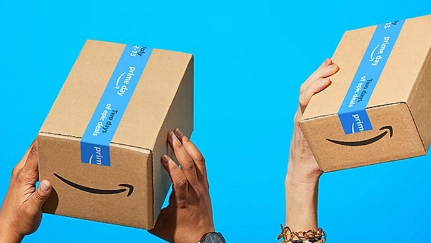Everything We Know About Prime Day 2024 for Amazon Sellers

Prime Day simply gets bigger every year.
Last year the first day of the event, 11 July 2023, was the single biggest day for Amazon in its entire history. Over the two days, 375 million items were sold worldwide, with total sales hitting $12.7 billion.
The massively increased traffic over Prime Day means it’s well worth sellers getting involved. Not just to boost revenue, but to drive traffic to your listings, build brand awareness through the funnel and gain customer reviews. We’ve seen many clients generate massive successes with Prime Day, so we’re big believers that you should be involved.
But it’s important to strategise, to make sure you’re not blowing your ads budget on products that won’t convert, or running out of inventory long before the event wraps up.
Here’s everything we know about Amazon Prime Day 2024 to help you build your strategy.
When is Prime Day?
Normally Prime Day takes place in the second week of July, so the best guess is currently around 9-10 July 2024 - though we’d be happy to bet on 16-17 July as well…
Why get involved with Prime Day?
It’s all about conversion - the key metric on Amazon, the thing that drives your sales and your profitability. If your conversion levels are high, it means you’ll spend less on your ads.
High conversion is the result of really good content, strong brand awareness and competitive pricing. With the right mix of pricing and advertising, events like Prime Day help most of our clients achieve higher conversion rates and therefore organically rank better. This effect usually lasts for some time after Prime Day.
On the other hand, you need to be wary of the potential cost. If your margins are lean, be careful playing around Prime Day: find good spots at smart prices.
Thanks to Amazon Marketing Cloud (AMC), you can access really useful data around event days from your own sales history. AMC gives you ‘tentpole’ analysis to help you build momentum after high-traffic events like Prime Day and Black Friday.
What kind of deals can sellers use on Prime Day?
There are four main types of deals:
- Lightning Deals - prominently displayed, limited-time-only deals, which work best with a well-chosen discount
- Prime Exclusive Discount - a percentage-off discount for Prime members only - the exclusivity makes it popular with Prime shoppers
- Coupons - a brightly coloured tag next to the product price offering money off or 2-for-1-type deals
- Promotions - more BOGOF or percentage-off deals, and for these ones you can create custom promo codes and URLs so you can share them on social media or with influencers.
Which kind of deal is best?
It depends on your brand and your product.
Fees on Lightning Deals are typically 2-3 times higher than normal during Prime Day, but these tend to work best with products that are already high-converting: if you’re trying to launch a new product, use coupons or Prime Exclusive Discounts instead.
If your product is high-converting and you have plenty of inventory, you’re likely to see the best results from Lightning Deals.
Advertising around Prime Day
Your deals are unlikely to get much traffic unless you advertise them.
Aside from deciding which promotions to try, you should work out your advertising strategy, and that includes for the lead-in and lead-out times around Prime Day. Amazon traffic is increased in the weeks before and after Prime Day, so it’s a good time to increase your bids.
Boosting your product’s visibility in the days and weeks before your deal goes live is a sure-fire way of delighting your customers and attracting conversion.
Here’s a rundown of our lead-in and lead-out ads strategy:
Lead-in
Target top- to mid-funnel shoppers in your product category by:
- Increasing impressions and clicks with Sponsored Brands, DSP and Sponsored Display
- Increasing product detail page ad coverage to target customers who are browsing competitor products
- Increasing budgets and bids for higher traffic and CPCs.
During Prime Day week
Drive purchases across new and existing shoppers by:
- Advertising products with deals through Sponsored Products, Sponsored Brands and Sponsored Display
- Increasing product detail page ad coverage to win market share from competitors and piggy-back off their pages
- Remarketing to users who discovered your brand during the lead-in, or who are already loyal customers, using Sponsored Display and DSP
- Increasing budgets and bids for higher traffic and CPCs.
Lead-out
Remarket to shoppers who missed Prime Day and drive more purchases from your new Prime Day customers by:
- Strong remarketing using Sponsored Display and DSP
- Adjusting budgets for lower traffic.
Top tip: Automate your bids
On Prime Day there’s so much traffic, it’s difficult to gauge how much budget you’re going to need.
It’s best to use software to continuously monitor your bids. Automation tools allow you to adjust your bids automatically, increasing them or increasing your budget if it starts to run out.
At e-Comas we work with some fantastic partners that can automate your bids for you.
Another top tip: Use social media and Amazon’s free social tools
Drum up more interest over Prime Day using Amazon’s free social products. Amazon Live, Amazon Brand Stores and Amazon Posts are free tools to help you build your brand on Amazon: Brand Stores in particular (as well as Posts in the US) allow you to showcase your brand story, show your products being used in different contexts, and let your business’s personality shine through.
Over the last few Prime Days Amazon has leveraged influencer culture, allowing influencers to curate early Prime Day deals on their Amazon storefronts, including exclusive promo codes for certain brands and ‘influencer picks’ on the Inspire Tab of the Amazon Shopping App.